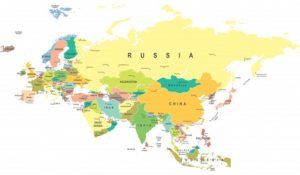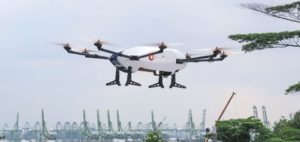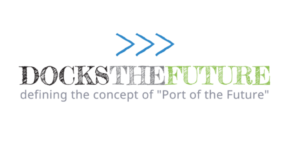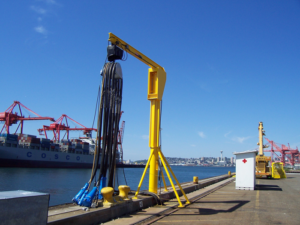The European Commission and the High Representative of the Union for Foreign Affairs and Security Policy adopted a Joint Communication that sets out the EU’s vision for a new and comprehensive strategy to better connect Europe and Asia.

The Joint Communication builds on the European Union’s own experience of enhancing connections between its Member States, with and in other regions. With sustainable, comprehensive and rules-based connectivity at its core, the Communication will help to guide the EU’s external action in this field and is a part of the implementation of its Global Strategy.
The Joint Communication on elements for an EU strategy on connecting Europe and Asia is available online.
“Connectivity is the way to the future. The more connected we are, the more opportunities we have – to find common political solutions and to bring economic prosperity to citizens”, said High Representative/Vice-President Federica Mogherini. “Our approach is the European Union’s way: to establish stronger networks and strengthen partnerships for sustainable connectivity, across all sectors and based on a respect for common rules. This is the European way to tackle challenges and take opportunities, to the benefit of people in Europe and in Asia as well.”
Vice-President for Jobs, Growth, Investment and Competitiveness, Jyrki Katainen said: “We want to work with our Asian partners to improve connections between Europe and Asia while bringing our values and approach in doing so. Infrastructure networks that will be built should be coherent, interoperable, as well as financially and environmentally sustainable. Calls for tender should be open and transparent to promote good governance and a level playing field. It is an approach that works, and one that we see a demand for among Asian countries, in our Eastern neighbourhood, the Western Balkans and beyond.”
The Commissioner for International Cooperation and Development, Neven Mimica added: “The EU and Asia are important partners on sustainable development and delivering the UN 2030 Agenda. Our development cooperation is an essential element of our broader engagement and partnership with Asia, not least in promoting sustainable connectivity. We want to further strengthen our partnership and focus even more on providing technical assistance, improving regulatory environments and creating incentives to drive forward and scale-up much-needed investments.”
Commissioner for Transport, Violeta Bulc, said: “Transport infrastructure is the lifeblood of EU-Asia connections, carrying both people and goods between the continents, on the wings of digitalisation and decarbonisation. Europe is sharing and engaging through one of the most developed transport networks and infrastructure financing programmes in the world: the trans-European transport network. Connectivity matters!”
Sustainable, comprehensive and rules-based: connectivity the EU’s way
The EU will combine a principled approach to connectivity and recognition that Asia encompasses different regions, which are home to very diverse countries in terms of economic models and level of development, with concrete action based on three strands:
- Creating transport links, energy and digital networks and human connections;
- Offering connectivity partnerships to countries in Asia and organisations;
- Promoting sustainable finance by utilising diverse financial tools.
Creating cross-border networks
Efficient infrastructure and connections create growth and jobs and enable people and goods to move. From transport links to energy networks, people-to-people contacts to digital webs, the EU will extend its own networks and contribute to new ones beyond its borders.
The EU’s Trans-European Transport Networks (TEN-T) is being extended to countries bordering Asia. The EU should now connect the TEN-T with networks in Asia. The EU’s digital single market provides a blueprint for enhancing trade in digital services, while its Digital4Development strategy fosters socio-economic development. We will share our experience of creating regional, liberalised energy markets with a focus on market-driven transformation towards clean energy. We will continue to promote human exchanges and mobility, for example in education, research, innovation, culture and tourism.
Developing strong bilateral and global connectivity partnerships
Our world depends on smooth and secure flows of goods, services and people. With a track record of a rules-based, fair and transparent internal market, the European Union is engaging with partners beyond its borders in order to promote similar approaches to sustainable connectivity.
The EU will pursue bilateral connectivity partnerships. The EU-China Connectivity Platform, for example, will help both parties to create synergies and address differing points of view. At a regional level, the EU is able to draw on its experience of contributing to the enhanced connectivity and integration of various regional cooperation structures, for example in the Baltic and Black Seas, as well as with ASEAN and as part of the ASEM process. Fostering increased region-to-region cooperation in connectivity would enable the European Union to extend its sustainable and rules-based connectivity model. Finally, the EU will engage with international organisations in determining the legal frameworks and concrete forms of connectivity, for example, to set international standards. The World Trade Organisation, the International Energy Agency, the International Maritime Organisation and United Nations bodies are just a few examples where the European Union is working and will continue to work for sustainable and fair global practices.
Promoting sustainable financing of investment
With Asia requiring an estimated €1.3 trillion per year for infrastructure investment, there are significant opportunities for EU companies, provided that robust legal frameworks are in place. The EU will look to combine financial sources from international financial institutions, multilateral development banks and the private sector to ensure sustainable domestic and international finance for connectivity while ensuring transparency and a level playing field for businesses. A comprehensive approach to investment financing pioneered in Europe by the European Fund for Strategic Investments, as well as outside the EU through specific geographical investment facilities, has successfully leveraged investments for infrastructure and connectivity. Combined with the European Commission’s proposals for reinforced external action under the next EU Multi-annual Financial Framework (2021-2027), the potential for additional intelligent, innovative and multi-dimensional investment financing in and towards Asia is significant.
A better connected Europe and Asia through transport links, energy, human and digital networks will strengthen the resilience of societies and regions, facilitate trade, promote the rules-based international order, and create avenues for a more sustainable, low-carbon future. This Joint Communication will inform the EU’s engagement with its partners from the neighbourhood to the Pacific, bringing benefits for the people of Europe and those countries who see the value of our approach to connectivity.
Background information
The Joint Communication adopted today by the European Commission and the High Representative of the European Union for Foreign Affairs and Security Policy provides the elements for an EU strategy on connecting Europe and Asia.
The proposals made in the Joint Communication will now be discussed in the European Parliament and the Council, and will contribute to discussions on connectivity at the upcoming Asia-Europe Meeting (ASEM) Summit, to be held in Brussels on 18-19 October.
Further Information
Joint Communication: Connecting Europe and Asia – building blocks for an EU Strategy
Memo: Explaining the European Union’s approach to connecting Europe and Asia
Factsheet: Connecting Europe and Asia – The EU Strategy
Source: OnTheMosWay






 The Transport Committee of the European Parliament supported yesterday the removal of tax barriers for the uptake of shore-side electricity supply (OPS) in ports for ships at berth. The Ertug report on the deployment of infrastructure for alternative fuels in the EU which was voted by the Transport committee pointed out that taxation has a major impact on the price competitiveness of alternative fuels and underlined that disparities in energy taxation for shore-side supply for ships should be addressed.
The Transport Committee of the European Parliament supported yesterday the removal of tax barriers for the uptake of shore-side electricity supply (OPS) in ports for ships at berth. The Ertug report on the deployment of infrastructure for alternative fuels in the EU which was voted by the Transport committee pointed out that taxation has a major impact on the price competitiveness of alternative fuels and underlined that disparities in energy taxation for shore-side supply for ships should be addressed.